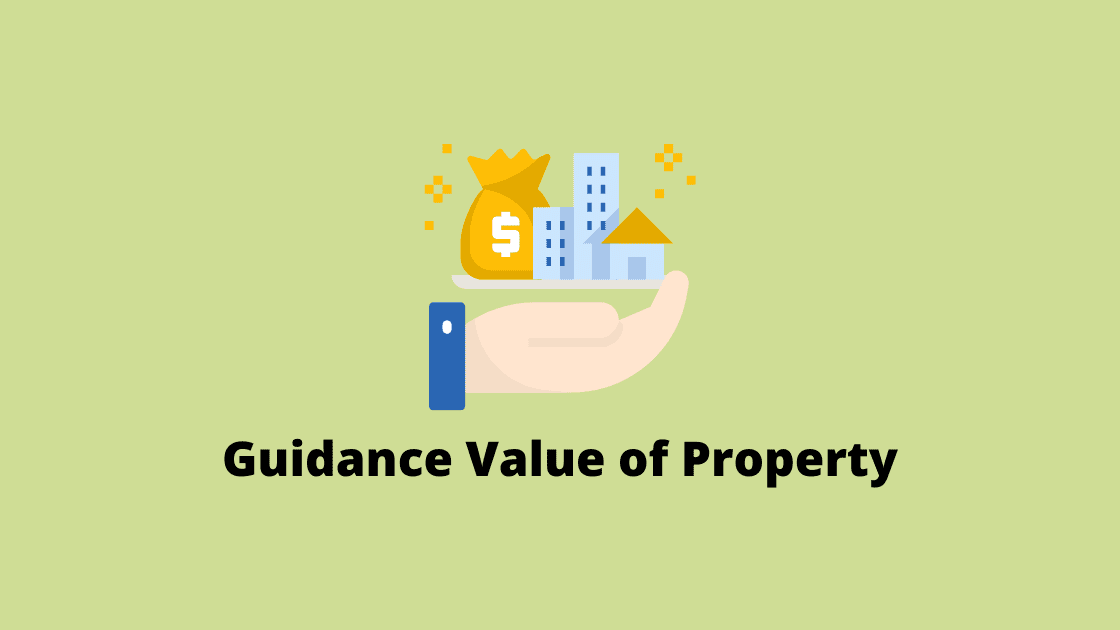How the Guidance Value of Property Can Be Determined?

Every one of us has a bustling timetable; our race begins early Monday morning and proceeds till Saturday evening. But at the end of each day, all we want is to return to our home.
A home is a place where we can be ourselves. It is a place of memories. It is a place where every person wants to return at the end of a hectic day.
Don’t you feel pleasure when you listen to soft music lying on your favourite couch? Yes, you do!
Now, buying a home is not an easy task. You need to have proper research on it. It does not end with the choice of the house you want to buy. There is a lot before and after that.
Nevertheless, as a home buyer, you need to have an idea of the price of the property you want to buy. Else you might be misled.
So, in this blog, we will give you a basic idea about guidance value.
What is Guidance Value?
Well, in basic words ‘guidance value’ alludes to the base worth of a property like land, private structure, etc. underneath which no property exchange can be completed. It is the minimum value of the property that you want to buy!
The determination of the guidance value of a property is not an easy task. Generally, the state government authority determines the guidance value of the property each year and declare it in the jurisdiction of the sub-registrar’s office of the respective area of the state.
It can be defined as the reference value of a property at a particular point in time. The Department of Stamps and Registration also publishes the market value of the property each year. But market price and guidance value are not the same.
The state government has a significant role in determining the floor price of a property and based on this the guidance value of the property can be determined. The market price may be higher or less than the guidance value.
The records of guidance value are generally maintained by the Department of Stamps and Registration of each state of India. It can differ from locality to locality.
A highly developed area or locality generally has a higher guidance value for various properties. On the other hand, a backward area or less developed area has, generally, low guidance value.
The guidance value of a property generally depends on various factors like accessibility and connectivity status, transport network types and condition, overall infrastructure, the historical importance of the area, degree of urbanization, the status of industrialization, the overall economic condition of the area, market rate of properties, etc.
Guidance value can be calculated only for land and also for land with a building. Even within a locality, the guidance value varies among various developers and constructions. With the progress of time, the market value of property generally rises.
Keeping the relationship with market value the state government also raises the amount of guidance value of a property.
In Summary
Well, I hope that I have been able to give you some idea of guidance value. Nevertheless, if you have any problem regarding it, feel free to contact us at info@roodland.com. We have a devoted team of professionals ready to guide you and answer all your queries.

What is Token in Real Estate?
Read this blog to know about guidance value before you buy a property.
The Power of Anchor Tenants: How Top Brands Can Boost Your Commercial Real Estate Development
Read this blog to know about guidance value before you buy a property.
Unlocking the Power of Feng Shui in Real Estate: A Guide to Harmonizing Your Home
Read this blog to know about guidance value before you buy a property.
What is Infrastructure Development Charges (IDC)?
Read this blog to know about guidance value before you buy a property.
Top Ambitious Infrastructure Projects Coming up in Ahmedabad
Read this blog to know about guidance value before you buy a property.
Quick and Easy Construction Technique Using GFRG Panels
Read this blog to know about guidance value before you buy a property.
Which City is Best for Settlement After Retirement?
Read this blog to know about guidance value before you buy a property.

















